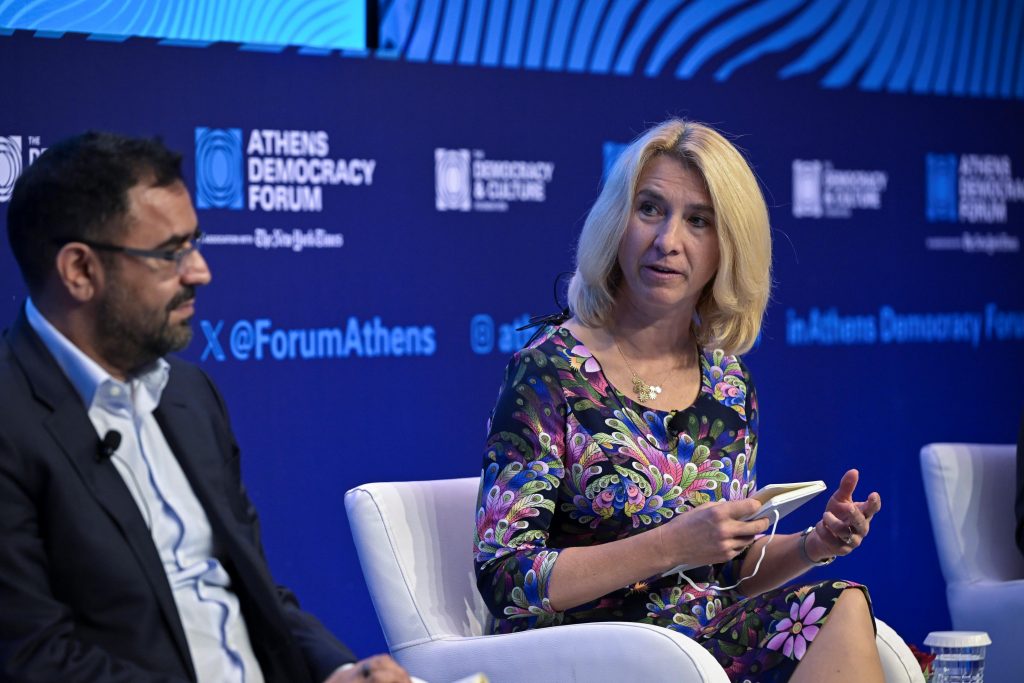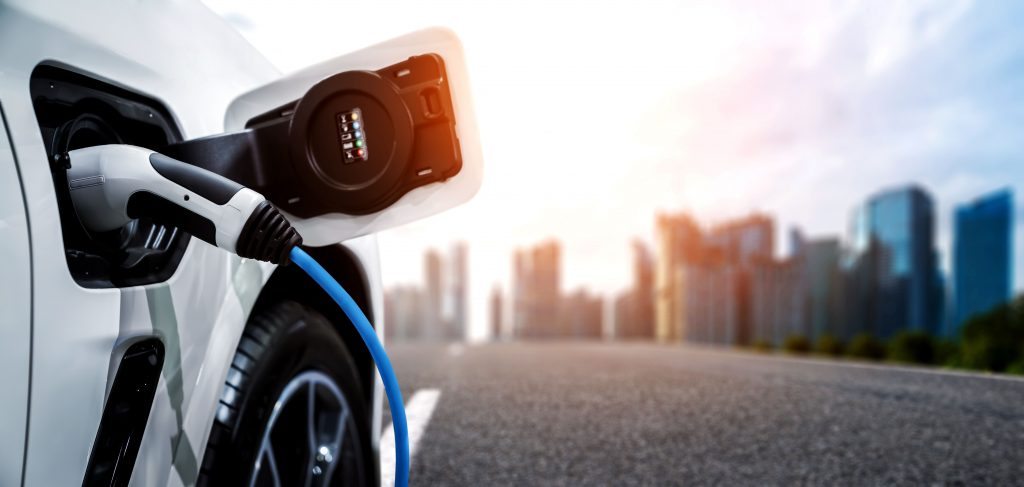The European Bank of Reconstruction and Development (EBRD) may not offer mortgages or savings accounts to the public, but its multibillion-dollar investments are quietly shaping 36 economies in this region of the world.
With a particular focus on financing the green transition, the EBRD’s Chief Economist, Beata Javorcik, considers the Bank to be “the ultimate impact investor.”
Still, this multilateral development bank often walks a fine line, promoting market-driven economies and democratic values in regions that are not always fully democratic, while striving to preserve its financial viability.
A Key Regional Player
Speaking with To Vima International Edition on the sidelines of the recent Athens Democracy Forum, Javorcik explains that “over 70 countries are our shareholders, including the European Union and the European Investment Bank (EIB).”
It is regarded as one of the top five regional development banks, with an estimated $71 billion in assets. Headquartered in London, the EBRD is often mistaken for the European Investment Bank (EIB), although their missions differ significantly.
“The EIB is a bank of the European Union, primarily engaging in sovereign projects,” explains Javorcik. “We at the EBRD, however, are focused on private-sector investments—that’s our mission.”
Founded in 1991, the EBRD was initially tasked with reshaping the economies of post-Cold War Central and Eastern Europe by investing in the private sector.
Now, over 30 years later, the EBRD has invested more than €200 billion in over 7,000 projects across three continents from the southern Mediterranean to Central Europe and from Eastern Europe to Central Asia.
“Three quarters of our investments are directed towards the private sector. We think of ourselves as a green bank with 50% of our investments being directed towards promoting green transition,” Javorcik explains.
But beyond the green transition, the bank has three criteria when deciding where and how to invest: the soundness of the investment, additionality, and impact.
First, the EBRD examines the soundness of any investment to make sure the loans will be repaid. Second, we assess the additionality of the project. Would this project have happened without us? We want to be active in areas and in cases where the project would not have happened without the EBRD. And the third most important aspect is the transition impact. In other words, we want the impact, the benefits of our project, not to be limited to our direct client. We aim for these benefits to accrue to the wider economy,” relates Javorcik.

The Challenge of Transitioning Economies
Javorcik says the EBRD wants the economies they invest in to be competitive, resilient, integrated, well-governed, inclusive and green. But as the bank moves geographically further away from Europe, the decision-making process comes with additional risks and considerations.
The EBRD was “the largest institutional investor in Ukraine before the war.” The bank had already invested over €4.6 billion in Ukraine before Russia’s invasion and continues to invest in the country, with an additional €1 billion just this year, explains Javorcik.
As a result of Russia’s invasion, the EBRD reported a €1.1 billion loss in 2022, and suspended all new projects in Russia. When war broke out, the EBRD closed their office in Moscow, though “actually, we stopped investing in Russia after the 2014 annexation of Crimea.”
The EBRD’s actions in Belarus also highlight the delicate balancing act it has to perform. Javorcik says that, following the blatant rigging of the country’s presidential elections, the Bank halted its support for Belarusian public-sector projects. It eventually stopped all private-sector projects in the country, too, showing how political situations impact the EBRD’s investment portfolio.
Transitioning economies is undeniably a challenging mission, and decision-making in this context is far from a black-and-white process. As Javorcik explains, “it is up to our boards, our board of directors and board of governors, and our shareholding countries to make the decisions.”
In 2023, despite the tremendous investments the EBRD is making in Ukraine-to “keep the lights on”, as Javorcik says-the bank still returned a net profit of €2.1 billion.

Greece’s Opportunities for Growth
Greece is no stranger to EBRD support, with the bank boasting involvement in 114 completed and ongoing projects in the country with a total value of 7.83 billion euros, and an active portfolio valued at 2.23 billion.
Working closely with the Greek Ministry of Finance, the bank extends loans to support private-sector initiatives in conjunction with the EU’s Recovery and Resilience Facility (RRF). They can extend loans of up to half a billion to support projects undertaken by private firms, pending the company puts up 20% of the funds.
Recipients include Avis cars, which required the funding to electrify its fleet in Greece, and Hatzopoulos sustainable packaging.
Turning to the EBRD’s outlook for Greece, Javorcik highlights that the bank invested half a billion in Greece last year.
“Greece is still feeling the legacy of the debt crisis,” and this has been compounded by global inflation. But despite that, “Greece is facing a moment of opportunity.”
Javorcik notes that the country is growing faster than the rest of the Eurozone, has a positive economic trajectory, and tourism seems to be heading for another record year.
That said, the country needs to press ahead with more reforms and, like the rest of Europe, improve its competitiveness.
When pressed for more details, Javorcik said, “There’s a lot that needs to be done.” Ways to improve the overall investment climate include “improving the workings of the judiciary sector […] improving tax compliance, making taxes predictable, cutting red tape, improving institutions, lowering corruption, and infrastructure.”
She added, “It’s better to focus horizontally on improving the overall business climate rather than vertically, on a particular sector.”
If Javorcik were to bet on sectors with strategic potential for Greece, she would focus on expanding luxury or specialized tourism, shipping, and renewable energy production. Additionally, given the relatively low cost of labor in the country, and assuming Greece continues to improve its broadband infrastructure, there is potential for Greece to play a significant role in the export of services.


